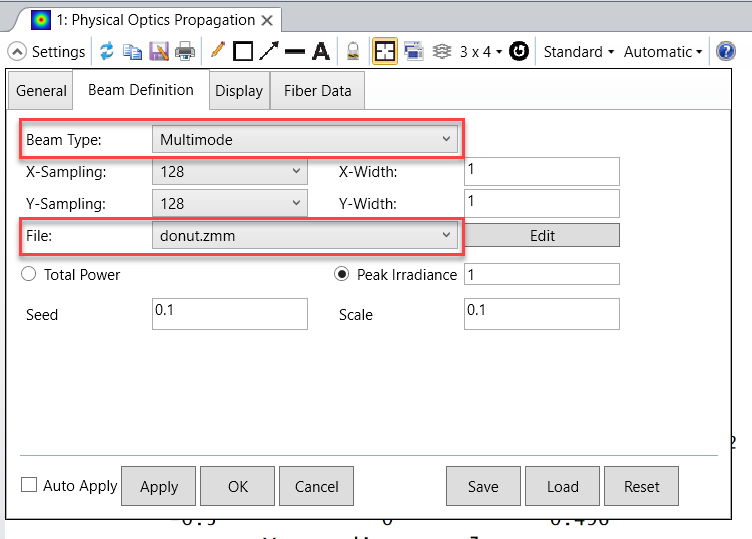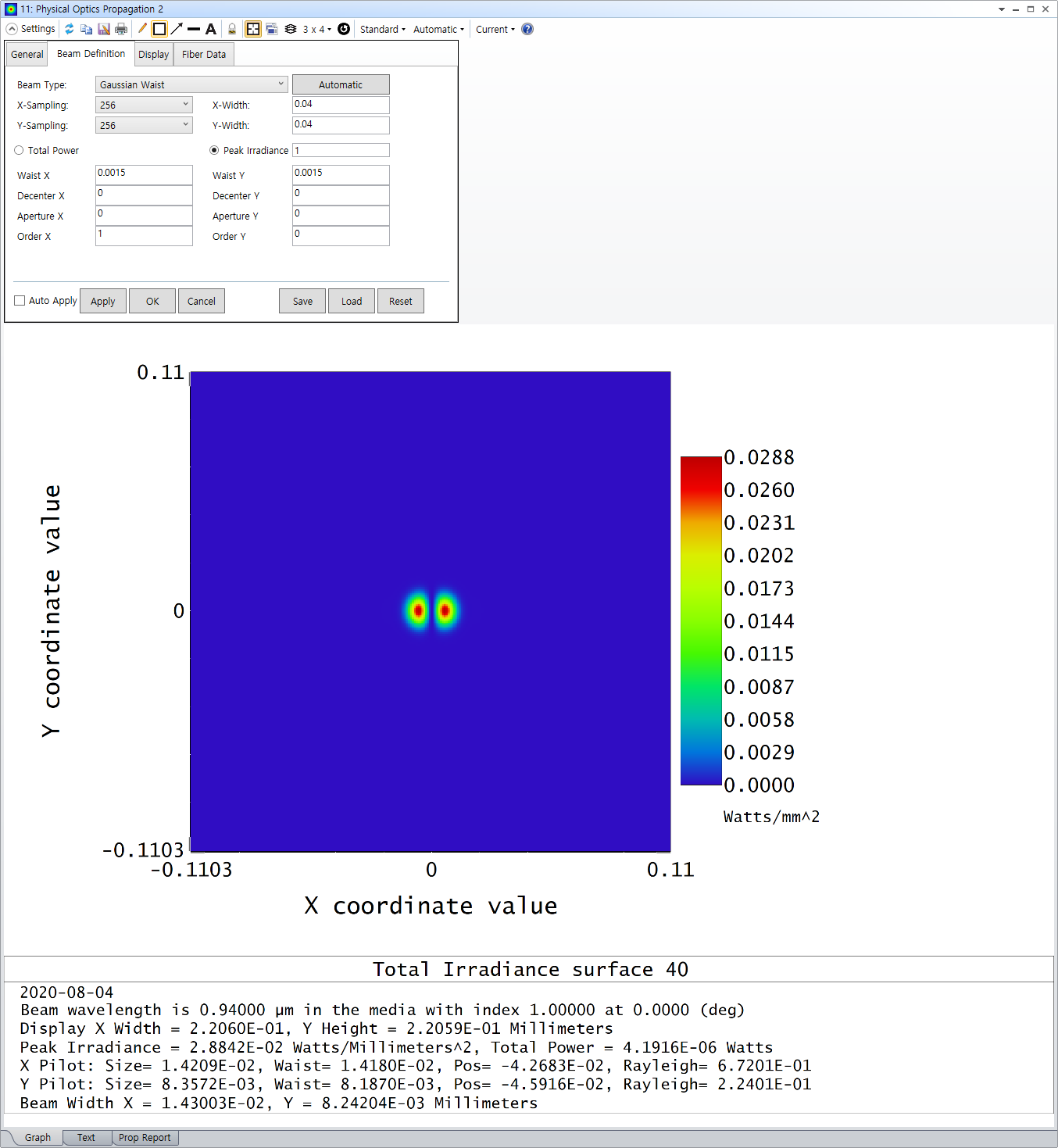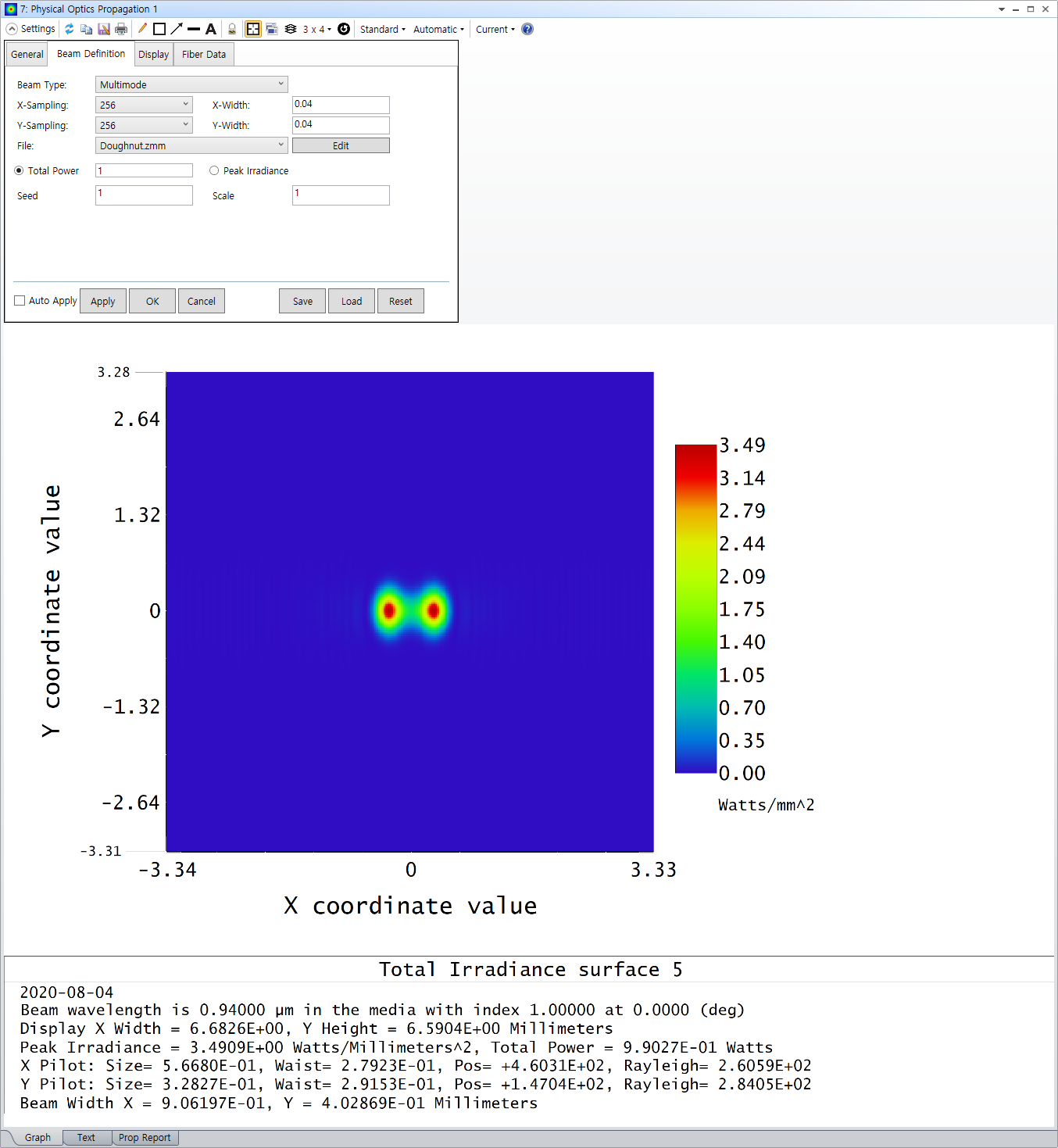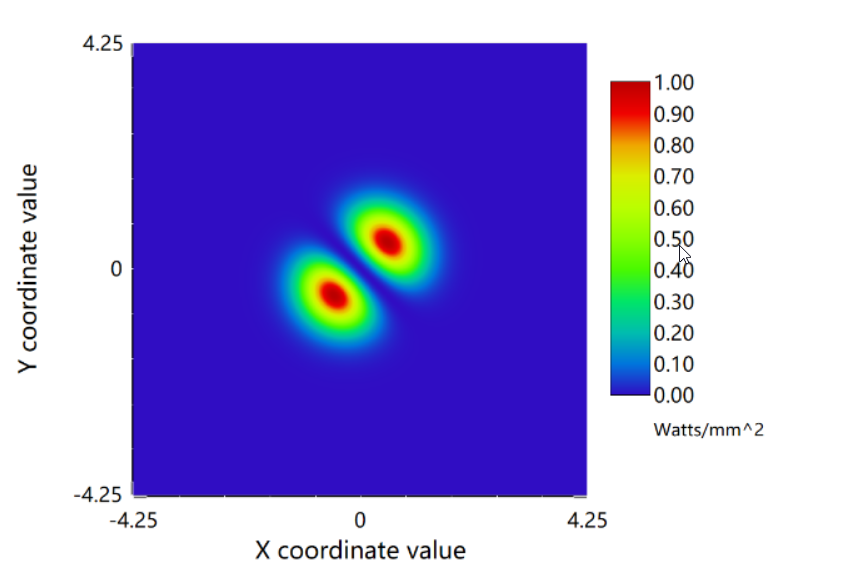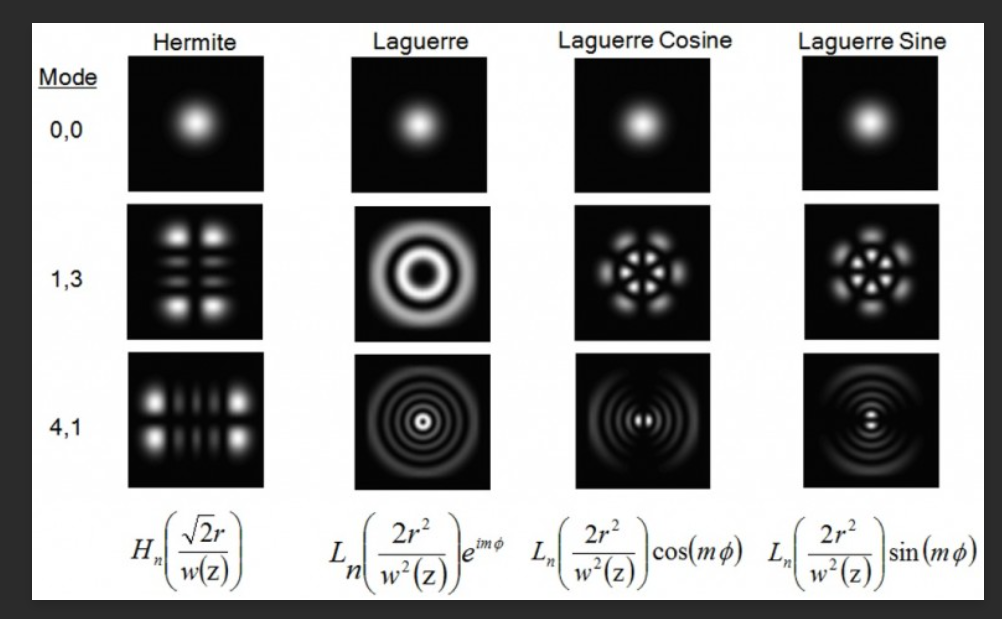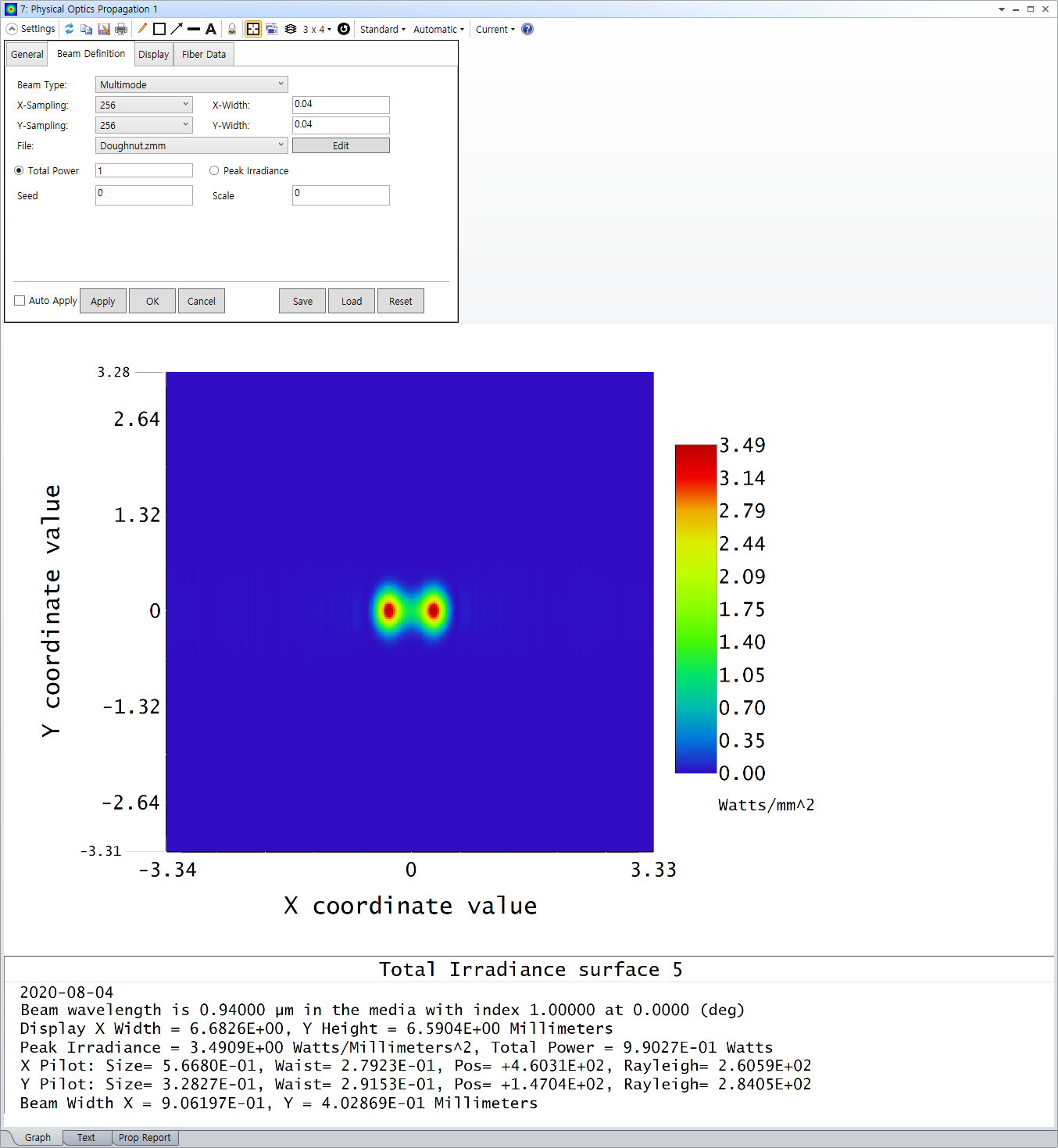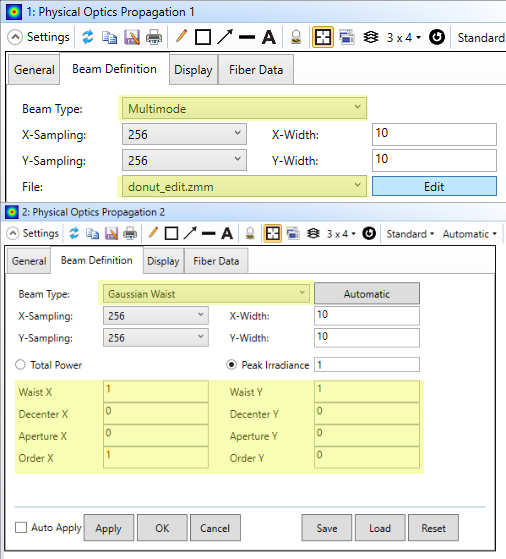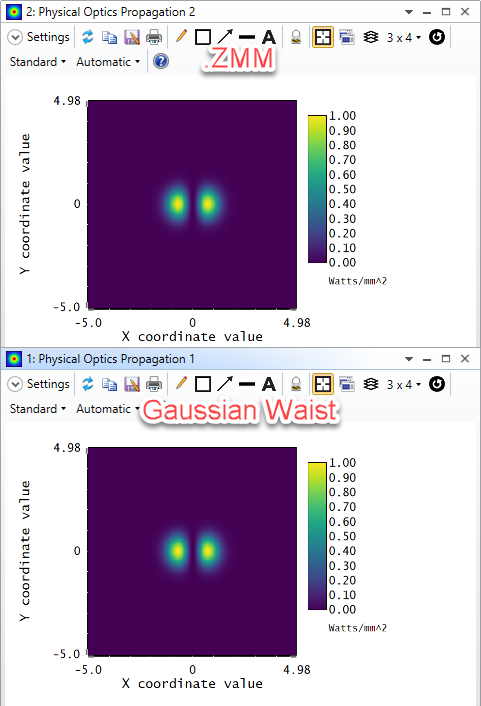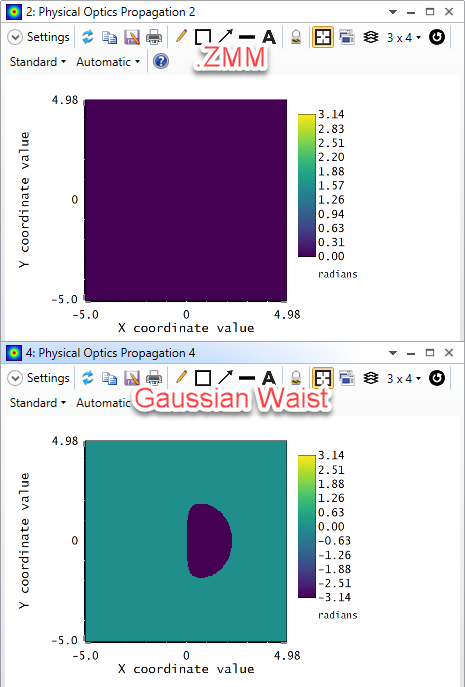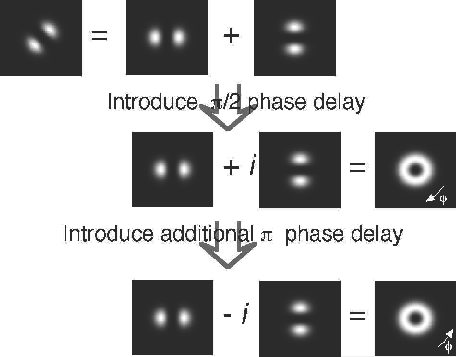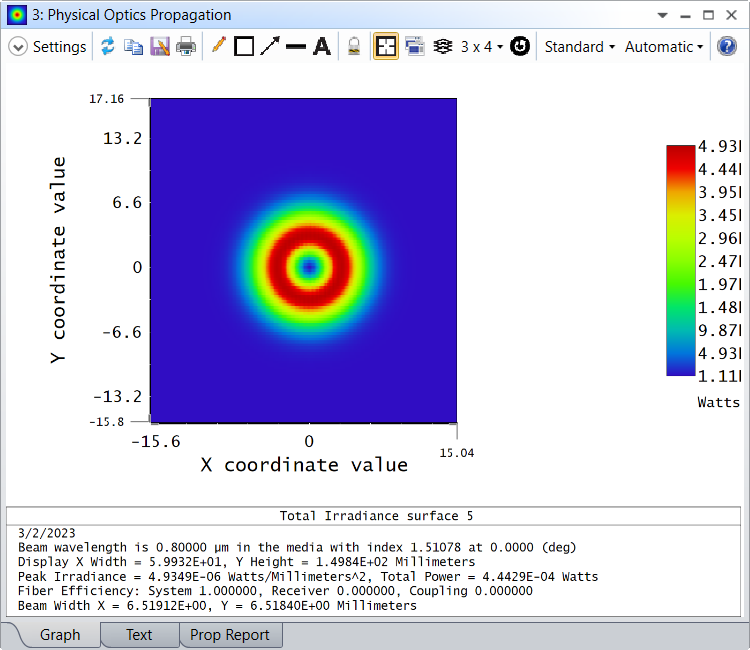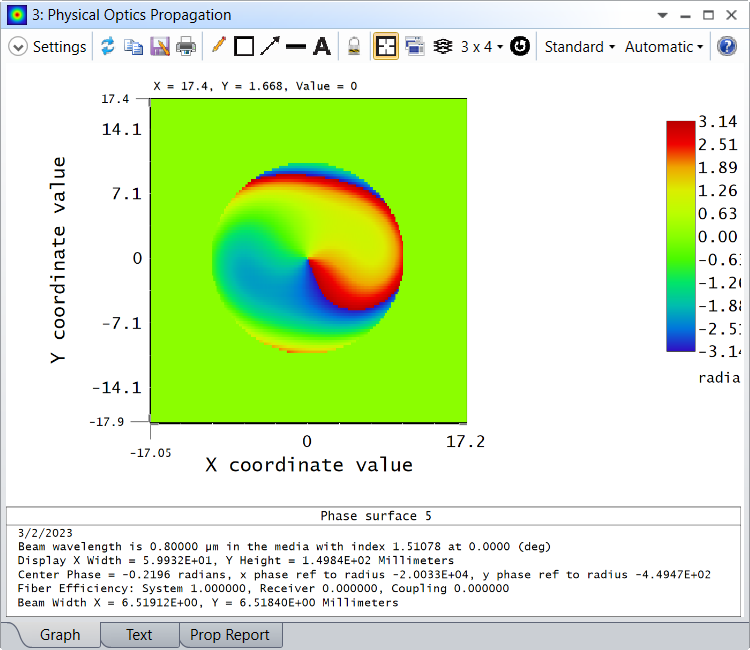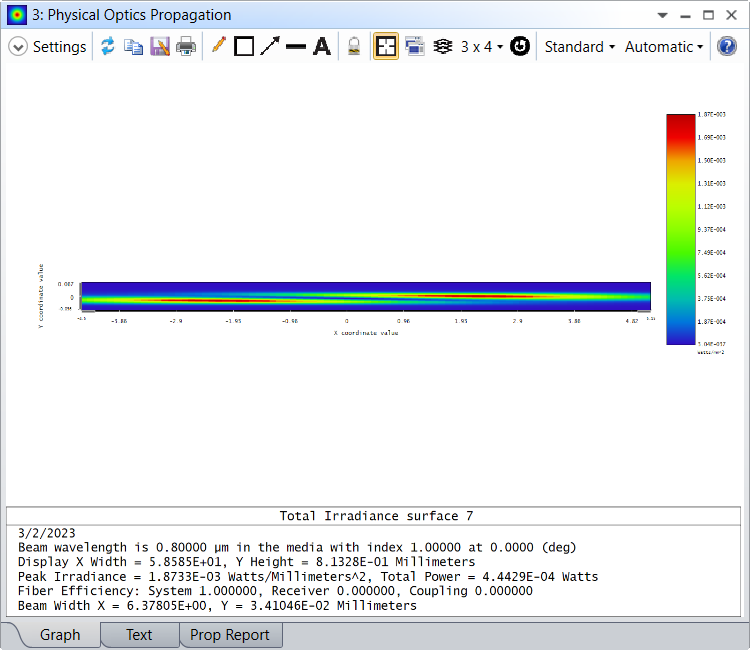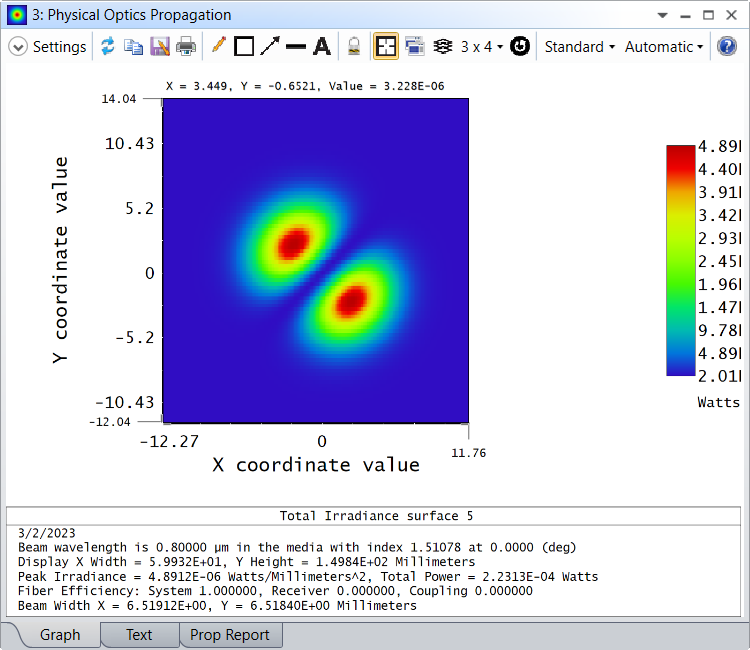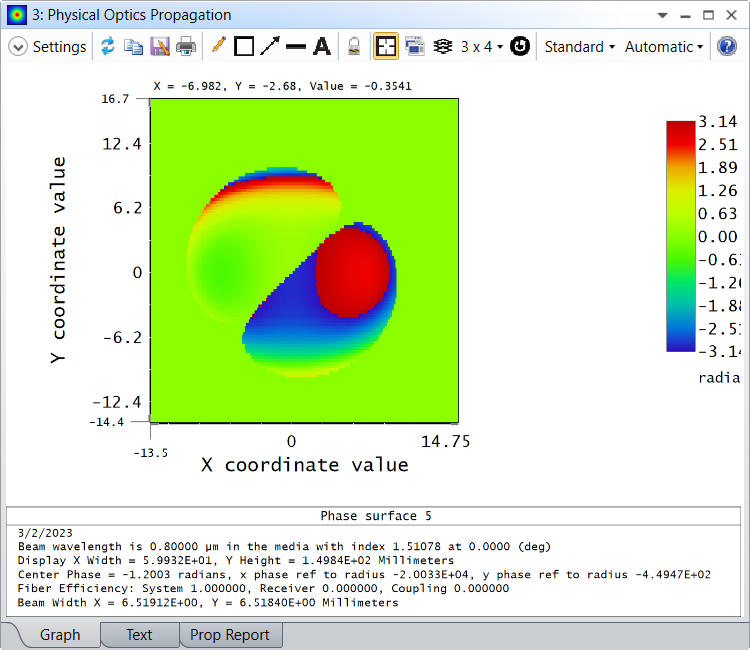Does anybody know the way to model Laguerre-Gaussian beam for 01* mode which is doughnut shaped?
I would like to simulate 'VCSEL' beam with its shape similar to doughnut and M2 value 2.1.
The Laguerre-Gaunnian beam of mode 01* (not 01) would give similar result, but I could not find the way to model it in Zemax.
For another trial, I have used the 'mixed mode' to simulate M2 value. The beam file was as below.
COHERENT
!DLL 0.2 Laguerre 0.0 0.0 0.00259 0.0
DLL 0.5 'Laguerre beam' 0.0 0.0 0.00275 90.0
DLL 0.4 'Laguerre beam' 1.0 0.0 0.00275 90.0
DLL 0.4 'Laguerre beam' 0.0 1.0 0.00275 90.0
Will the mixed beam give the same result with the normal Laguerre beam POP simulation? Should I use coherent beam or incoherent beam?

